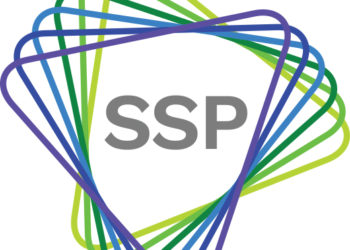On Thursday morning, Elsevier’s new CEO Kumsal Bayazit debuted in front of a librarian audience with a keynote address at the Charleston Conference. Bayazit stepped up to the podium amid high expectations. Her predecessor Ron Mobed retired earlier this year, as renewals with major accounts, including the University of California system, appeared stalled. Might Elsevier be rethinking elements of its negotiating tactics, product vision, or corporate strategy?

Bayazit’s full talk is available on video, so I will not attempt to recap all the details. Here is what stood out for me from the style and substance of her keynote.
Bayazit is clearly trying to reset the nature of Elsevier’s relationship with the library community. There was no need for Bayazit to come before this audience (a conference of mostly librarians but with a healthy representation of publishers and other vendors) unless she was truly interested in, as she put it, building bridges with this community. Judging from the audience reaction, it seems that at least in the near term this talk was disarming. Bayazit took a humble and direct approach, acknowledging librarian grievances and agreeing that in some cases at least they have merit. She asked for trust but emphasized that it would need to be earned through actions. What actions might these be?
Bayazit hinted at more deal-making flexibility than Elsevier has previously shown its library customers. In response to an audience member question, she admitted to pricing inequities across customers, referring to the current array of global content deals as “spaghetti,” given that many are still ultimately based on historic print spend. She committed Elsevier to a customer by customer unraveling of the spaghetti. But she also sees that different customers have different metrics of value, for example content access, usage, post-cancellation rights, or other attributes, which she anticipates will continue to yield some variation across customer agreements. How will Elsevier rebalance its customer agreements to provide more equitable pricing without sacrificing aggregate revenue?
Bayazit is committed to moving Elsevier towards greater open access — within the marketplace as it exists. As she put it powerfully, “No one can dispute the beauty and vision of freely accessible immediately available research content.” But Bayazit was also quick to list three key obstacles to open access: 1) The lack of open access adoption by faculty members even when it is made available on an opt out basis; 2) The insufficient resources available to publishing intensive institutions, will which are being asked to pay a greater share of publication fees in a gold open access ecosystem; and 3) Predatory publishing. Bayazit was absolutely clear that Elsevier will offer a variety of solutions in response to the demand of various market segments, rather than try to impose a single approach to open access globally, dashing hopes (if indeed any still existed) that Elsevier will lead a coordinated global flip.
Bayazit’s talk focused at length on product vision, giving no hint of any change in Elsevier’s strategic direction. She was optimistic and firm about Elsevier’s future as an analytics and workflow provider, entirely consistent with previous corporate communications such as this interview with chairman YS Chi last year. Bayazit called on the audience to “imagine” numerous specific benefits that might result from greater investment in these areas. In response to an audience question, she also was firm that growth in analytics would not result in any retreat from primary publishing, since “content is king.” We can certainly expect that under Bayazit’s leadership Elsevier will continue its massive investments in analytics and workflow.
Ultimately, Elsevier’s sense of its identity remains far more as an engine of science than a vendor to libraries. It will be fascinating to see whether Bayazit’s leadership results in a meaningful change in Elsevier’s brand position among its core customers.
Discussion
8 Thoughts on "Elsevier CEO Kumsal Bayazit Debuts at Charleston"
I write as a director of the Charleston conference I do wish he would have used the opportunity given to offer his thoughts in the form of a question at the time. I do agree with much of what he so elegantly said except I would add that unlike Ron Mobed she made clear that content is still important to her. As for open access there was noticeably no timetable
Thank you Roger. Kumsal’s keynote was a highlight of the Charleston Conference that underscores the continuing strength of the annual gathering as a place where librarians and vendors can share the stage and step outside of the normal pitch and negotiate relationship. I was struck by Kumsal’s statement that Elsevier does not double-dip. This seems patently false to me unless you are operating out of a corporate logic (delusion?) that sees subscription and APC revenues as completely independent of one another. From the library perspective, if two entities on campus (e.g., the library and a faculty author) are both writing checks to Elsevier, then double-dipping is an indisputable fact. I take this to mean that Elsevier does not, at worst, understand the goal of Open Access, and, at best, does not embrace the concept that there should be a one-to-one connection between the content that the academy provides the publisher and the imperative to recognize its value as part of the whole financial equation moving ahead into the inevitable transition to OA. The academy wants to disseminate its research and make it OA … period! Elsevier still needs to figure out how to facilitate the transition or imperil the lofty goals we heard so eloquently expressed. In the meantime, the blatant double-dipping will stand out like the proverbial sore thumb until Kumsal and her team stop treating OA as another golden egg. Elsevier’s next steps will demonstrate whether the shareholders of a for-profit company will yield anything on the bottom line in time to save the day.
I cannot speak for Elsevier, but my understanding is that they do “global offsetting” rather than local offsetting. So if your local author pays an APC and an article is made OA, then the subscription price across the board is reduced by some amount for all subscribers, not just for your institution. In some ways this makes sense — if your author is voluntarily making an article OA (and author-pays Gold OA is designed to concentrate the costs on the author), then that’s one less article that everyone else should be paying for. If they only reduce the costs at the institution of the author voluntarily choosing the APC route, then everyone else is still paying the same amount but getting less subscription content for their money.
The problem of course is transparency. Since no one pays list price for journals and many commercial publishers require NDAs for contracts, there’s no way to check and see whether that global offsetting is actually happening.
So Elsevier doesn’t double dip: i.e. charge twice for the same article. The costs for publishing an article with Elsevier can be covered in two ways – through an open access fee paid by authors/institutions or through a subscription paid by readers – but we never charge for the same article twice. We have a strict no double dipping policy. Our subscription prices are set annually by applying our pricing variables to subscription articles only.
Secondly, questions about double dipping are often premised on the assumption that open access articles are replacing the number of subscription articles being published and therefore subscription prices should be falling to reflect this. This assumption is, in fact, incorrect.
There has in fact been no substitution as both the market for subscriptions and OA has been growing healthily. Elsevier published 34,000 open access articles last year, it also published 430,000 subscription articles and our subscription article volume has been growing at 4% since 2012 – above the market average. Similarly, the Complete Freedom Collection has grown its subscription articles by a compound annual growth rate of 5% or ~17,000 articles per year in absolute terms since 2014.
It’s true that we charge readers for subscription articles and charge authors / institutions for Open Access articles, but never both groups for both reading and publishing.
This is a function of a mixed model economy, where an increasing portion of articles are published open access alongside continuing growth in subscriptions. This is a structural challenge associated with any move to open access publishing, which is why we are willing and open to working with customers to help manage two sets of costs, in a way that achieves fair value for both sides.
You can read more about Elsevier and double dipping here: https://www.elsevier.com/about/policies/pricing#Dipping
PS: for transparency, I work for Elsevier’s parent company.
This is a big mistake for all publishers. Double-dipping is administratively complicated to eliminate. Better to double or triple or quadruple dip and reflect that in overall pricing. You could eliminate a lot of overhead by avoiding special workarounds.
Thank you Paul. This is a great explication of Elsevier’s position on “double-dipping,” but we will need to agree to disagree about the definition. In your own words and from my perspective, this is double-dipping:
“It’s true that we charge readers for subscription articles and charge authors / institutions for Open Access articles, but never both groups for both reading and publishing.”
It matters less what the payments go toward than the fact that Elsevier is collecting two checks from a given institution for the same content. It is precisely this failure to connect the concepts of reading and publishing that lie at the heart of the problem. The library community generally regards Elsevier’s costs to read as too high, so to then argue that there should be a separate cost to disseminate the results of the research provided in the first place as open access only grinds salt into the wound. But, let’s leave the argument of double-dipping aside. When will Elsevier step forward to show the community an agreement that “that achieves fair value for both sides?”
I just learned that there is a conference in Washington about preprints this week. A few years ago these were discussed at Charleston, then a hiatus of one year, and now there were at least two sessions where these figured. Preprints are very much in the air.
A question here is what Elsevier has in mind for its acquired preprint server SSRN (more properly, eprint server?) Was this addressed in the Elsevier talk?
I hope the Washington discussants address these questions:
–How does Elsevier appear to conceptualize the relationship between its journals and its preprints?
–Elsevier’s designs in SSRN seem very ambitious. Note the homepage, which mentions “new networks”, which include food science and engineering, just for example. Has Elsevier made statements about its expansion beyond the traditional role of SSRN, which I recall to have been social sciences at least largely?
–And by the way, didn’t SSRN originally mean “Social Sciences Research Network”, or something similar? What is the new meaning of this acronym? Perhaps SSRN is now an acronym detached from its original meaning.



